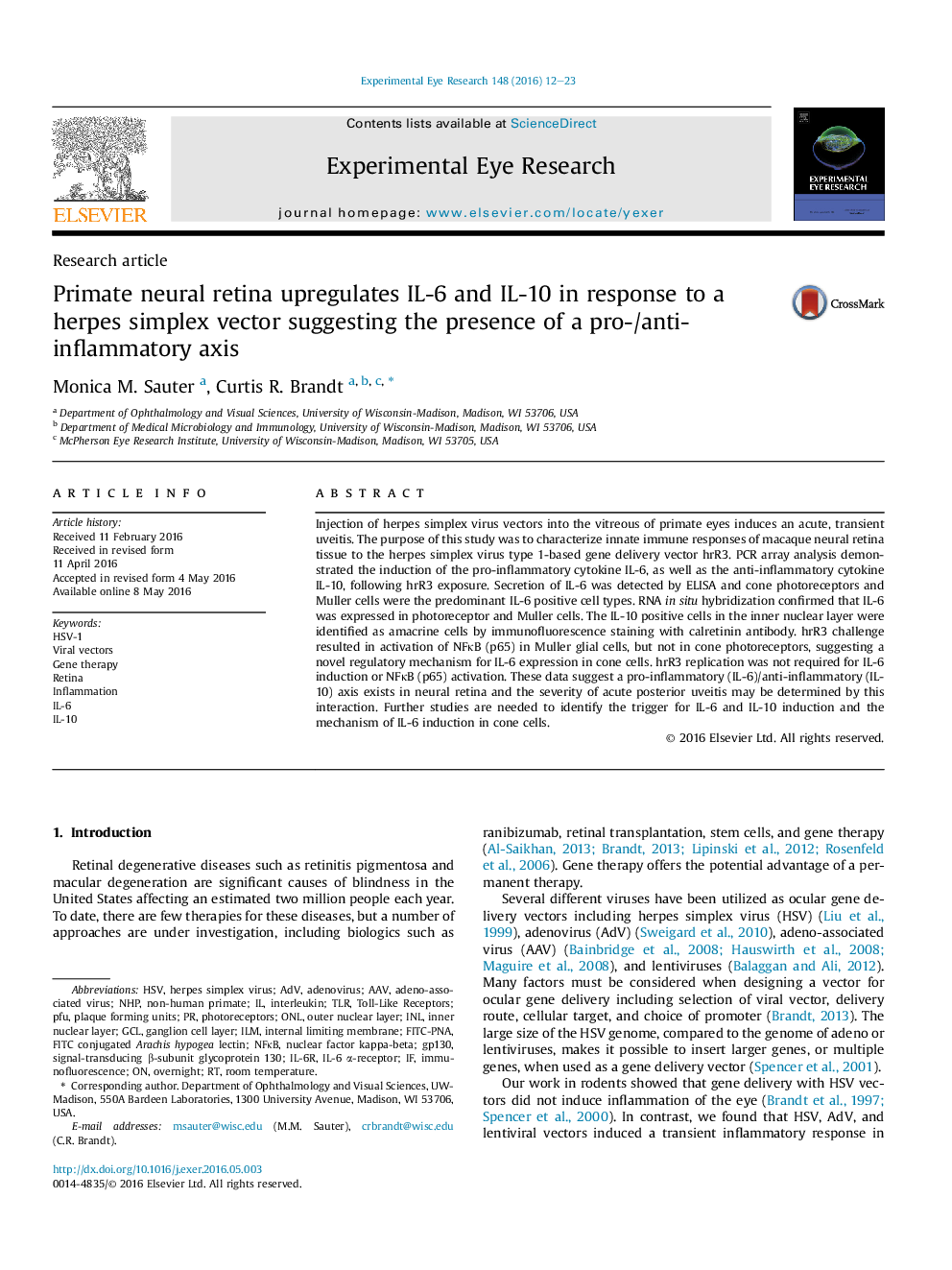| Article ID | Journal | Published Year | Pages | File Type |
|---|---|---|---|---|
| 4011089 | Experimental Eye Research | 2016 | 12 Pages |
•The HSV-1 gene delivery vector hrR3 induced IL-6 in Muller and cone cells.•hrR3 induced the anti-inflammatory cytokine IL-10 in amacrine cells.•NFĸB (p65) was activated in Muller cells but not in cone photoreceptors.•Vector replication was not required for cytokine induction or NFĸB (p65) activation.•A pro-/anti-inflammatory axis may determine the extent of vector induced uveitis.
Injection of herpes simplex virus vectors into the vitreous of primate eyes induces an acute, transient uveitis. The purpose of this study was to characterize innate immune responses of macaque neural retina tissue to the herpes simplex virus type 1-based gene delivery vector hrR3. PCR array analysis demonstrated the induction of the pro-inflammatory cytokine IL-6, as well as the anti-inflammatory cytokine IL-10, following hrR3 exposure. Secretion of IL-6 was detected by ELISA and cone photoreceptors and Muller cells were the predominant IL-6 positive cell types. RNA in situ hybridization confirmed that IL-6 was expressed in photoreceptor and Muller cells. The IL-10 positive cells in the inner nuclear layer were identified as amacrine cells by immunofluorescence staining with calretinin antibody. hrR3 challenge resulted in activation of NFκB (p65) in Muller glial cells, but not in cone photoreceptors, suggesting a novel regulatory mechanism for IL-6 expression in cone cells. hrR3 replication was not required for IL-6 induction or NFκB (p65) activation. These data suggest a pro-inflammatory (IL-6)/anti-inflammatory (IL-10) axis exists in neural retina and the severity of acute posterior uveitis may be determined by this interaction. Further studies are needed to identify the trigger for IL-6 and IL-10 induction and the mechanism of IL-6 induction in cone cells.
